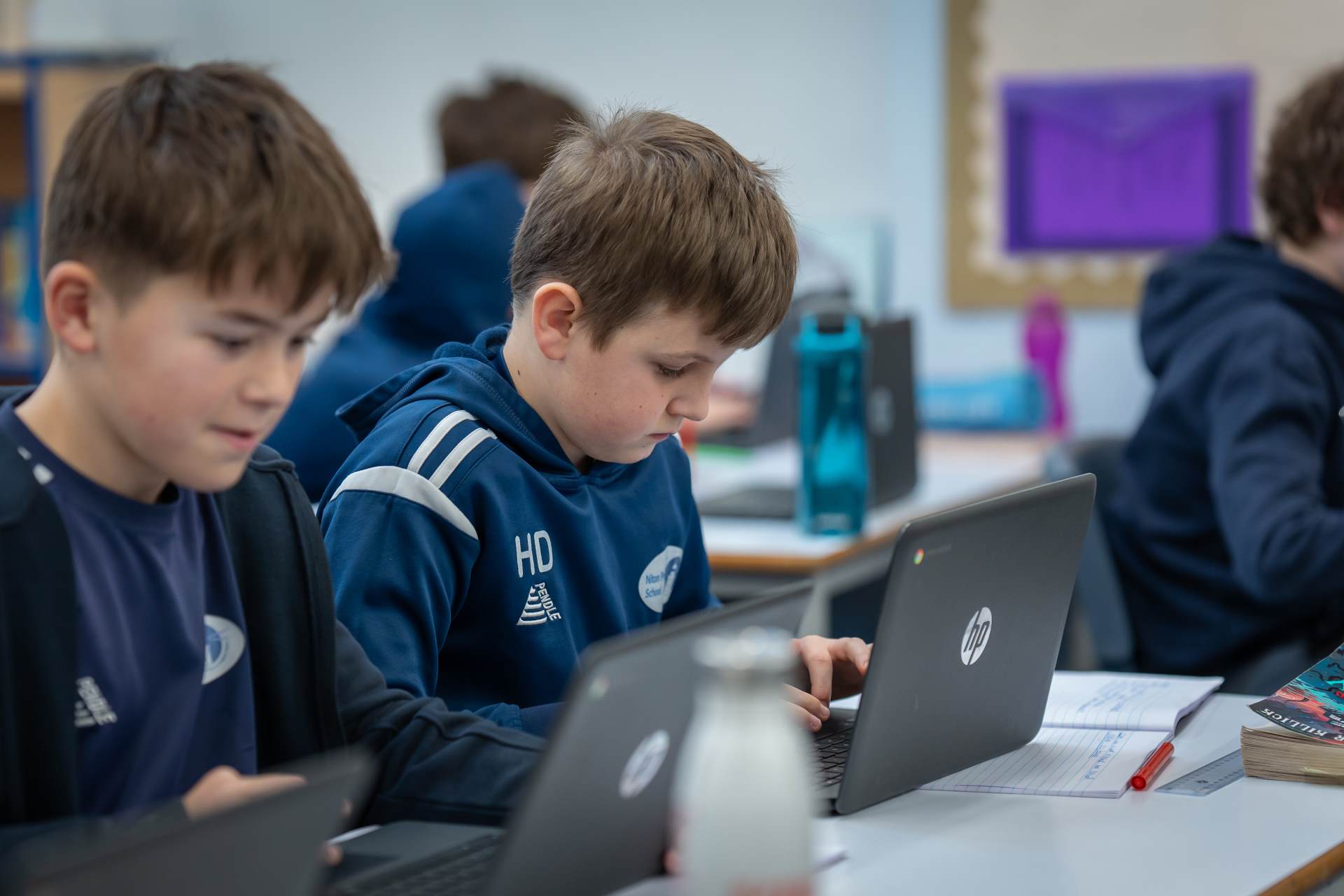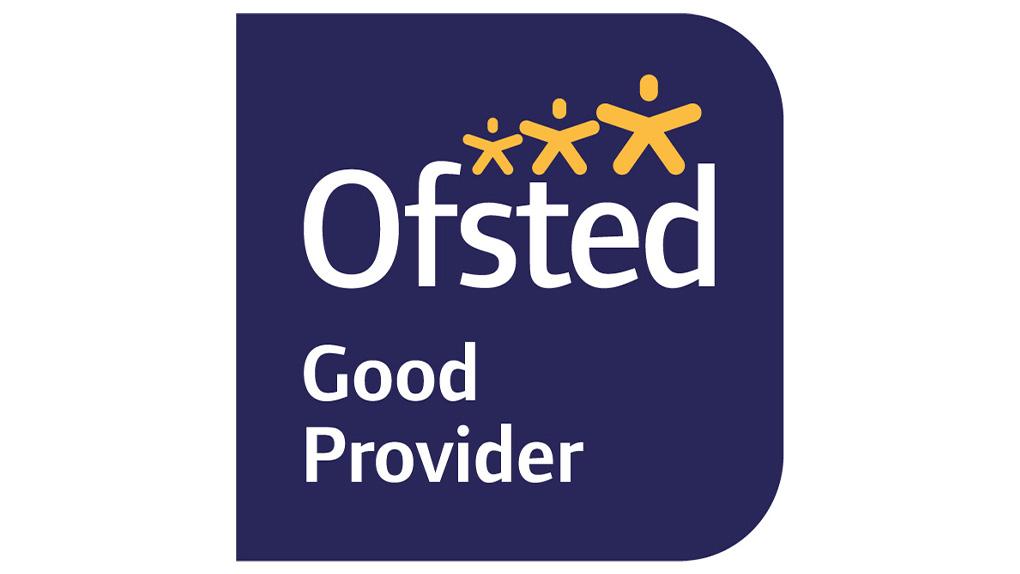Online Safety

Advice and Guidance for Pupils
There are lots of things you can do to keep yourself safe online.
Think before you post
Don’t upload or share anything you wouldn’t want your parents, carers, teachers or future employers seeing. Once you post something, you lose control of it, especially if someone else screenshots or shares it.
Don’t share personal details
Keep things like your address, phone number, full name, school and date of birth private, and check what people can see in your privacy settings. Remember that people can use small clues like a school logo in a photo to find out a lot about you.
Watch out for phishing and scams
Phishing is when someone tries to trick you into giving them information, like your password. Someone might also try to trick you by saying they can make you famous or that they’re from a talent agency. Never click links from emails or messages that ask you to log in or share your details, even if you think they might be genuine. If you’re asked to log into a website, go to the app or site directly instead.
Think about who you’re talking to
There are lots of ways that people try to trick you into trusting them online. Even if you like and trust someone you’ve met online, never share personal information with them like your address, full name, or where you go to school. Find out more about grooming.
Keep your device secure
Make sure that you’re keeping your information and device secure.
Never give out your password
You should never give out your password or log-in information. Make sure you pick strong, easy to remember passwords.
Cover your webcam
Some viruses will let someone access your webcam without you knowing, so make sure you cover your webcam whenever you’re not using it.
It’s not always easy to know what’s safe online and what’s not. Childline's advice can help you to keep safe and to know what to do when things go wrong.
Childnet’s mission is to work with others to help make the internet a great and safe place for children
Help and Advice for 4-11 Year Olds
This website has a wealth of information and guidance on how to stay safe online.
Advice and Guidance for Parents and Carers
The internet is an amazing resource which enables children to learn, communicate and be creative. However, being able to keep up to date with your children’s use of technology can be difficult. You may sometimes feel that your children know more about technology than you do, however they still need advice and protection when it comes to technology and online safety. These following websites are intended to help you and your child understand more about the digital universe of your children and how to help keep them safe.
National College Parent Guides Library
National Online Safety's mission is to make the internet a safer place for children. They aim to do this by equipping school staff, parents and children with the knowledge they need to understand online dangers and how best to react should an incident arise. The link above provides up to date information about a wide variety of social media apps and platforms your child might be using.
UK Safer Internet provides advice and resources are here to support you as you support your child to use the internet safely, responsibility and positively.
NSPCC - Online Safety Guidance
The NSPCC are the first to admit that the internet is amazing. Children can play, learn, create and connect - opening up a whole world of exciting possibilities. But with the digital world changing all the time, how can you make sure your child’s staying safe? That’s where the NSPCC come in. Whether you’re an online expert or you’re not sure where to start, their tools and advice will help you keep your child safe.
CEOP - Helping you to better protect your children online
Thinkuknow is an education programme from the National Crime Agency’s CEOP Command. Since 2006, it aims to ensure that everyone has access to this practical information – children, young people, their parents and carers and the professionals who work with them.
The Click CEOP button is an asset of the National Crime Agency CEOP command. The CEOP command works to protect children from sexual abuse and exploitation both online and offline.
The button has been developed for children and young people and is offered as a convenient and potentially less intimidating method of reporting these sensitive types of crime, alternative to face-to-face and telephone reporting to local police forces. It provides children and young people with access to an online mechanism for reporting known or suspected child sexual exploitation or child sexual abuse directly to CEOP.
Internet Matters
A comprehensive web resource with a wide array of tips and advice on how to navigate the online world with your child. Some of their guidance we attach below but you can find even more by visiting the link.
Childnet
Childnet International is a registered UK charity that aims to make the internet a safe place for children and young people. Packed with resources it is a great resource for parents.
BBC
The BBC have a website and app called Own It. The website has a lot of content for children to help them navigate their online lives, and the free smartphone app comes with a special keyboard which can intervene with help and support in the moments that children need it the most.
E-Safety – Roles and Responsibilities
As E-Safety is an important aspect of strategic leadership within the school, the Headteacher and Governors have ultimate responsibility to ensure that the policy and practices are embedded and monitored.
This policy, supported by the school’s acceptable user agreements for Staff, Governors, visitors and pupils, is to protect the interests and safety of the whole school community.
It is linked to the following mandatory school policies: Child Protection, Health and Safety, Home–School Agreements, and Behaviour/Pupil Discipline (including the anti-bullying) Policy and PSHE.
E-Safety in the Curriculum
- ICT and online resources are increasingly used across the curriculum. We believe it is essential for E-Safety guidance to be given to the pupils on a regular and meaningful basis. E-Safety is embedded within our curriculum and we continually look for new opportunities to promote E-Safety.
- The school has a framework for teaching internet skills and E-Safety in discreet ICT lessons and through its application across a range of curriculum areas.
- Educating pupils on the dangers of technologies that maybe encountered outside school is done informally when opportunities arise and as part of the ICT curriculum.
- Pupils are taught about copyright and respecting other people’s information, images, etc through discussion, modelling and activities.
- Pupils are aware of the impact of Cyber-bullying and know how to seek help if they are affected by any form of online bullying. Pupils are also aware of where to seek advice or help if they experience problems when using the internet and related technologies; i.e. parent/ carer, teacher/ trusted staff member, or an organisation such as Childline or CEOP report abuse button.
- Pupils are taught to critically evaluate materials and learn good searching skills through cross curricular teacher models, discussions and via the ICT curriculum.
The school uses an approved filtering system at all times. Occasionally there is the need to disable this to access rich material provided through blanket blocked websites such as Youtube etc. This will only be temporarily disabled by the ICT Technician after the page has been approved by the Headteacher / ICT Leader / ICT Technician. It will be enabled immediately after the webpage has been used.
Notes in relation to ICT:
- Under no circumstances shall children access the internet through unfiltered systems.
- Under no circumstances shall any adult / child try to bypass the filtering system or use alternative proxy settings.
- E-Safety Skills Development for Staff
- Our staff receives regular information and training on E-Safety issues in the form of external CPD, CPD led by external agencies and internal training sessions led by the Technologies Leader / ICT Technician.
- Details of on going staff training can be found with the Technologies Leader.
- New staff receive information on the school’s acceptable use policy as part of their induction.
- All staff have been made aware of individual responsibilities relating to the safeguarding of children within the context of E-Safety and know what to do in the event of misuse of technology by any member of the school community
- All staff are encouraged to incorporate E-Safety activities and awareness within their curriculum areas.
- Managing the School E-Safety Messages. We endeavour to embed E-Safety messages across the curriculum whenever the internet and/or related technologies are used E-Safety posters will be prominently displayed.
- As required, events, assemblies and PSHE lessons will also cover E-Safety awareness.
- We use Smoothwall which offers a complete online safety infrastructure protecting students and staff at every touch point







